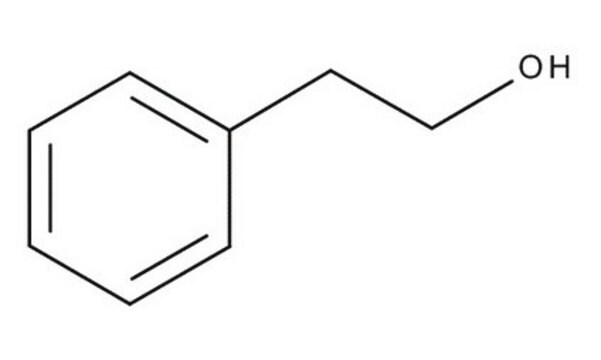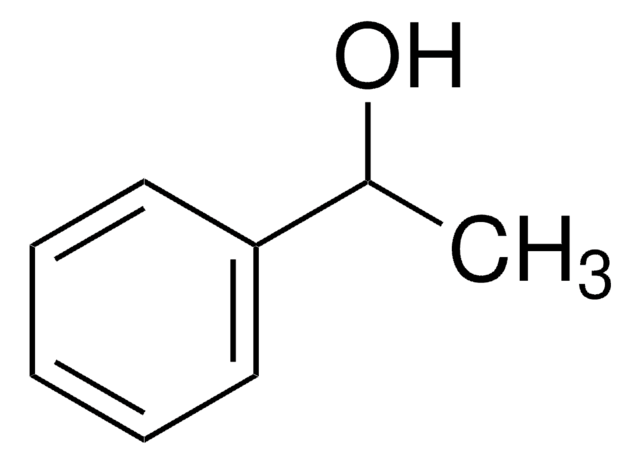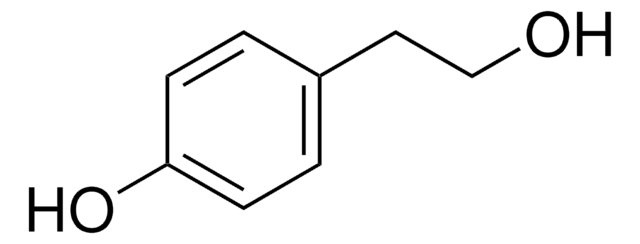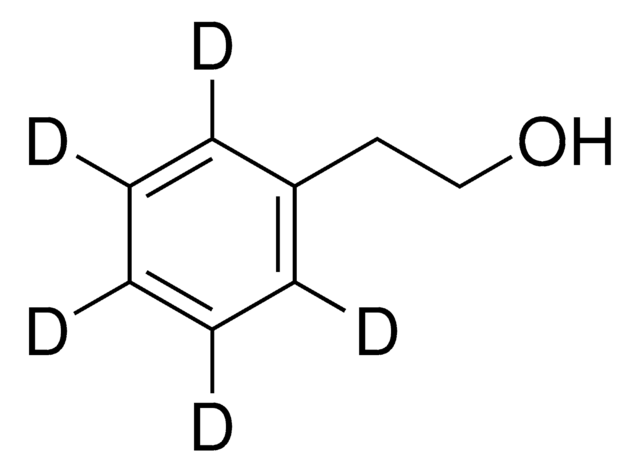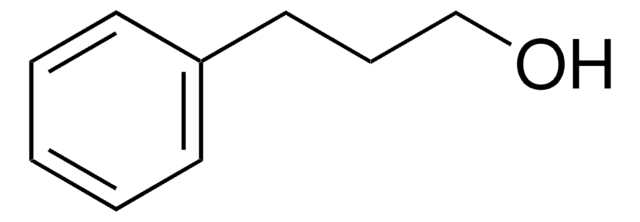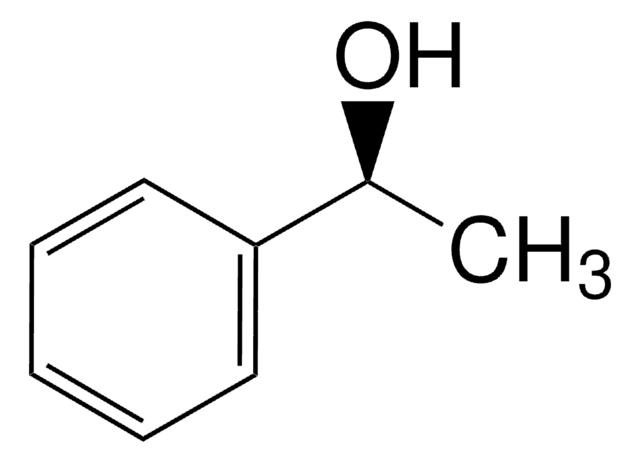77861
2-Phenylethanol
≥99.0% (GC)
Sinônimo(s):
β-PEA, 2-Phenylethyl alcohol, Benzyl carbinol, PEA
About This Item
Produtos recomendados
densidade de vapor
4.21 (vs air)
Nível de qualidade
pressão de vapor
1 mmHg ( 58 °C)
Ensaio
≥99.0% (GC)
Formulário
liquid
índice de refração
n20/D 1.5317 (lit.)
p.e.
219-221 °C/750 mmHg (lit.)
pf
−27 °C (lit.)
densidade
1.020 g/mL at 20 °C (lit.)
cadeia de caracteres SMILES
OCCc1ccccc1
InChI
1S/C8H10O/c9-7-6-8-4-2-1-3-5-8/h1-5,9H,6-7H2
chave InChI
WRMNZCZEMHIOCP-UHFFFAOYSA-N
Procurando produtos similares? Visita Guia de comparação de produtos
Categorias relacionadas
Descrição geral
Aplicação
- The bacteriostatic activity of 2-phenylethanol derivatives correlates with membrane binding affinity: This study examines how the bacteriostatic properties of 2-phenylethanol derivatives are influenced by their affinity for binding to membranes, providing insights into their antimicrobial effectiveness (IS Kleinwächter et al., 2021).
- Anti-depressive-like effect of 2-phenylethanol inhalation in mice: This study explores the neuropsychological effects of inhaling 2-phenylethanol, suggesting potential therapeutic applications for depression (H Ueno et al., 2019).
recomendado
Palavra indicadora
Warning
Frases de perigo
Declarações de precaução
Classificações de perigo
Acute Tox. 4 Oral - Eye Irrit. 2
Código de classe de armazenamento
10 - Combustible liquids
Classe de risco de água (WGK)
WGK 1
Ponto de fulgor (°F)
215.6 °F - closed cup
Ponto de fulgor (°C)
102 °C - closed cup
Equipamento de proteção individual
Eyeshields, Faceshields, Gloves, type ABEK (EN14387) respirator filter
Escolha uma das versões mais recentes:
Já possui este produto?
Encontre a documentação dos produtos que você adquiriu recentemente na biblioteca de documentos.
Os clientes também visualizaram
Protocolos
Information on the Amide bond and the Catalytic Amide Bond Formation Protocol. Amidation of amines and alcohols. The amide bond, an important linkage in organic chemistry, is a key functional group in peptides, polymers, and many natural products and pharmaceuticals.
Nossa equipe de cientistas tem experiência em todas as áreas de pesquisa, incluindo Life Sciences, ciência de materiais, síntese química, cromatografia, química analítica e muitas outras.
Entre em contato com a assistência técnica
